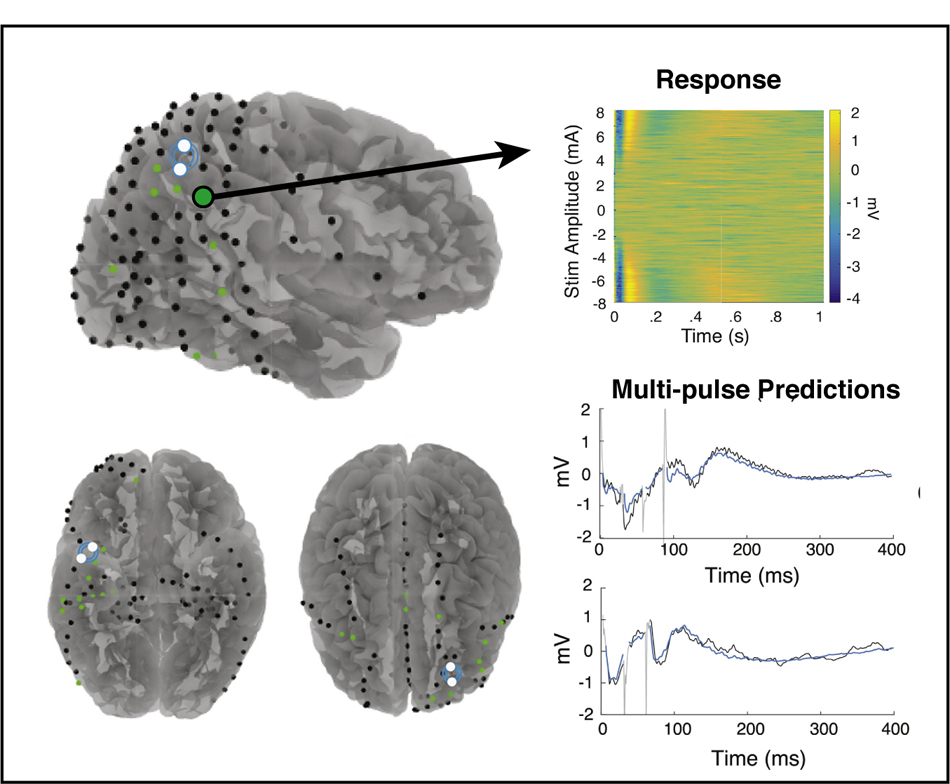Large-scale Brain Responses to Electrical Stimulation
Cortical evoked responses are used in studies of epilepsy as well as studies of connectivity across the brain. In this study, we worked with data from epilepsy patients implanted with ECOG arrays to understand how bipolar electrical stimulation in one brain region affected other connected regions of cortex. We found that the variable dynamics of the evoked response across cortical locations can be captured using the same simple architecture, a linear time-invariant system that operates separately on positive and negative input pulses of stimulation. We demonstrate that characterizing the response to stimulation using this simple and tractable model of evoked responses enables us to predict the responses to subsequent stimulation with single pulses with novel amplitudes, and the compound response to stimulation with multiple pulses. We also investigated other architectures, finding that a quadratic-shaped non-linearity increased the accuracy of replicating neural effects. This effect coupled with the asymmetry of response to cathodic-leading and anodic-leading pulses indicated that polarity caused different neurons within the direct region of stimulation to get activated and in turn different network level responses.
Steinhardt, C. R., Sacré, P., Sheehan, T. C., Wittig, J. H., Inati, S. K., Sarma, S., & Zaghloul, K. A. (2020). Characterizing and predicting cortical evoked responses to direct electrical stimulation of the human brain. Brain Stimulation, 13(5), 1218-1225.
